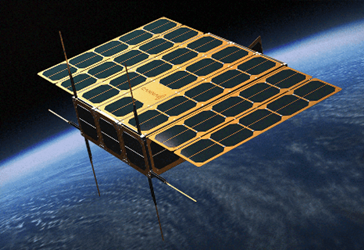China Claims EM Drive Technology Tested In Space
By Jof Enriquez,
Follow me on Twitter @jofenriq

Chinese scientists recently claimed to have successfully tested — aboard China’s Tiangong 2 space laboratory — their own electromagnetic drive, or EM Drive thruster technology. If verified, China will have beaten the United States to the punch in testing whether the technology works in actual space conditions.
The National Aeronautics and Space Administration (NASA) in late November published a peer-reviewed paper on the EM Drive, a type of propulsion system first conceptualized by British scientist Roger Shawyer in 1999, which relies on bouncing electromagnetic waves within a cone-shaped cavity to move the device through space without ejection of exhaust gases from a propellant. It was reported in September that NASA's Eagleworks program was readying the launch of a 6U CubeSat to test a version of the EM Drive, called the Cannae Drive, in space within six months.
The China Academy of Space Technology (CAST), however, issued a press release on December 10 stating that the EM Drive technology had been tested in its laboratories, and was undergoing zero-gravity testing in its Tiangong 2 space station, reports Red Orbit.
If China is successful in installing EM Drives on satellites, it would significantly advance orbital maneuvering and altitude control, as well as make it cheaper, stated Li Feng, lead CAST designer for commercial satellites, according to I4UNews.com. That's because EM drives would need only solar energy or a reactor as a power source, instead of heavy and expensive chemical fuels.
With fuel no longer a requirement, EM drives could pave the way for manned missions to Mars, and for probes sent to Jupiter and its moons, asteroids, and eventually to deep space — something that China reportedly intends to accomplish in the next several years.
China's Information Office of the State Council unveiled recently a white paper discussing its ambitious space agenda, including the first soft-landing on the far side of the moon in 2018, and a Mars mission to carry out orbiting and roving exploration before the end of the decade.
It's unclear how far along Chinese scientists are with the development of their EM drive, or if they plan to integrate this or similar advanced propulsion technologies into near-term space missions. For now, the priority seems to be preparing a heavy-lift carrier rocket's engine for a 2030 launch.
"There is an old saying in aerospace industry, 'If you want to develop space industry, you need to work on space rockets first; and if you want to develop space rockets, you need to work on its engines first," vice administrator of China National Space Administration, Wu Yanhua, said in the press conference, reports Space.com.
In operational orbit since Sept. 20, the Tiangong 2 space laboratory also is researching technologies for manned spaceflight capacity. It's one of many high-profile programs launched by China to implement a so-called 'Space Silk Road' to reflect namesake economic and political strategies.
"Our overall goal is that, by around 2030, China will be among the major space powers of the world," Wu said in a news conference, reports CNN.
